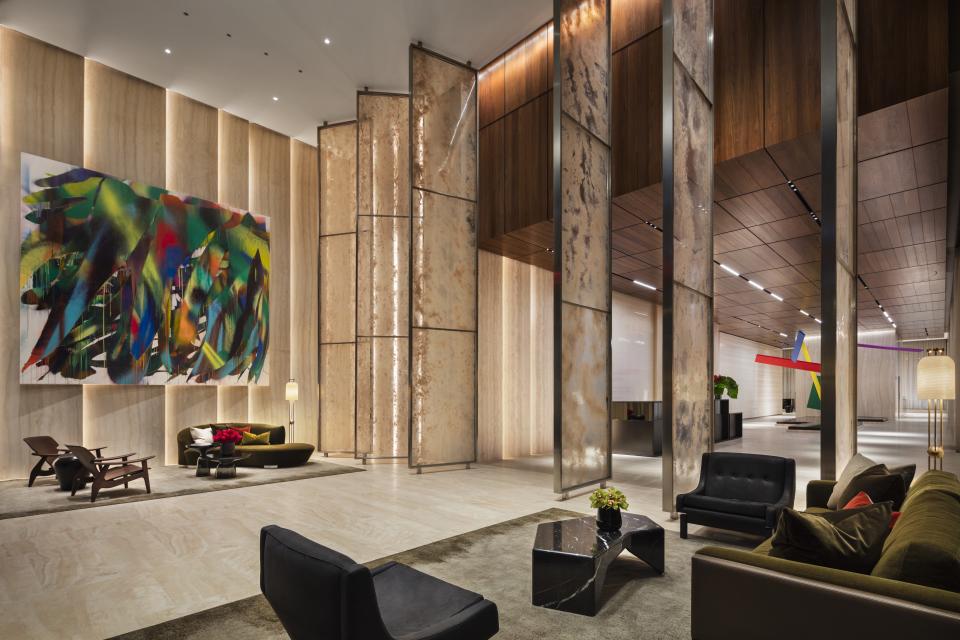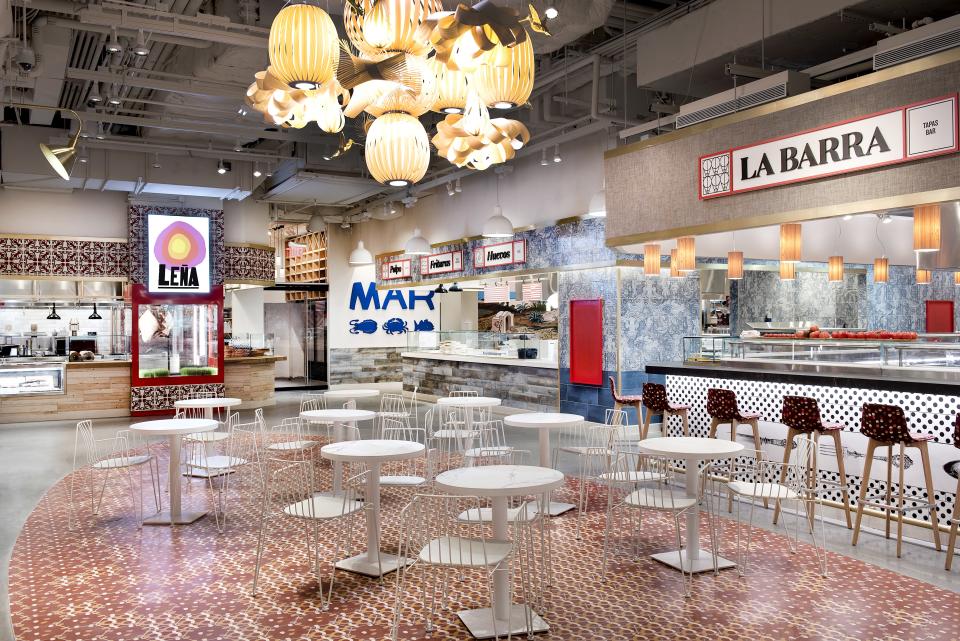Does Hudson Yards Have an Interior Design Job for You?
After decades of waiting, Hudson Yards, the largest private real-estate development in U.S. history, will be revealed to the public today. Everything about the Manhattan development is ambitious, from its $25 billion budget to its 28-acre footprint. At its completion in 2025 (Phase II has yet to begin), Hudson Yards’s sparkling buildings will comprise offices, retail, restaurants, a hotel, a performance venue, and even a public school.
This futuristic new neighborhood will also include approximately 4,000 residences, amounting to nearly 6 million gross square feet—and that may mean a lot of new opportunities for interior designers.
How much of a market this will create, exactly, is difficult to quantify.
AD PRO contacted multiple design organizations about average budgets for high-end Manhattan residential design. Kim Radovich, president of the American Society Interior Designers (ASID), offered a range for what a client might spend to design a new Manhattan apartment, and it’s broad: $100,000 to $2.5 million. Given the 4,000 total residences planned for Hudson Yards, the total spent on interior design services could fall within a range from $400 million to $10 billion. For the 428 apartments in Phase I alone, the so-called Eastern Yard, ASID’s estimate translates to between $43 million and $1 billion, assuming the majority of residents hire an interior designer.

HudsonYardsBusiness1
Some of these spaces, of course, are already designed (Rockwell Group and Tony Ingrao are already involved in some interior design jobs) and others may already be contracted out. Hudson Yards’s developer, Related Companies, declined to quantify what percentage of the project has yet to receive interior design contracts.
But that doesn’t mean there is a dearth of opportunity. Though people are beginning to move into apartments, a number of residential units in the Eastern Yard are advertised for sale or rent. At the 88-story 15 Hudson Yards, 13 of the 285 units total are listed for sale by City Realty, ranging in price from $4.3 million for a two-bedroom to $32 million for a four-bedroom penthouse. The 13 units, as well as two additional, are also being brokered by Corcoran. Those 15 apartments total nearly 40,000 square feet of finished space, potentially open for bid by designers. There also may be a need for residential design services at Skidmore, Owings & Merrill’s 35 Hudson Yards, which will be home to 143 apartments priced from $5 million, alongside an Equinox Fitness club and the first Equinox Hotel.
Commercial interior designers also should keep an ear to the ground. Thirty, 50, and 55 Hudson Yards (still in various stages of completion) will be among the city’s tallest office buildings and home to a bevy of monied companies, including WarnerMedia, HBO, and global investment firms KKR and BlackRock. Phase I’s remaining commercial buildings, 10 Hudson Yards (completed in 2016) and the development’s shopping mall, are already spoken for, but that doesn’t preclude future tenants from seeking design services.

HudsonYardsBusiness2
And wait, there’s Phase II: the Western Yard. Occupying an open swath alongside the West Side Highway, the Western Yard will include six residential and one mixed-use building—approximately 4 million gross square feet of residential space—plus the public school. That area is expected to begin construction next year.
So, how would a designer who hasn’t already partnered with the developer or architects at Hudson Yards get a foot in? Have a strong design point of view and maybe put on a suit to pitch, suggests Elena Frampton, founder of Frampton Co interiors, who designed one of the model units at 15 Hudson Yards.
“We have a strong brand of understanding how people live. We work with private clients and also developers, and it is a balance, understanding the nuances of both,” explains Frampton, who noted that her 20-year portfolio of design work has yielded fruitful partnerships.
Bidding for business with a mega-developer, Frampton says, requires a certain level of professionalism that differs from private residential design. “Residential is really relationship focused. On something like this, which is enormous, this is not a cozy living room presentation. This is having clear, concise ideas and being able to communicate them professionally.”
Frampton could not speak to her budget for the model unit, nor to whether she’ll be doing more work at Hudson Yards, but she says the design process for this client was “dreamy—and that’s not always the case with commercial spaces.”
As to other spaces at Hudson Yards that might need designers, Frampton is sanguine: “There is always opportunity.”

